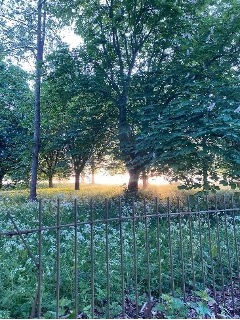Sappho to Suffrage: Exhibition Review
- TOG

- Feb 20, 2019
- 3 min read
With a week left to see the Weston Library’s magnificent exhibition Sappho to Suffrage, I thought now was the time to tell readers of That Oxford Girl some details about the exhibition!
The free exhibition celebrates the achievements of women across a range of disciplines: from literature to art, science to language. The exhibition marks 100 years since the Representation of the People Act, which began progression for all women in the UK to gain the right to vote. The exhibition features work by Sappho, Mary Shelley, Jane Austen and Ada Lovelace among others.
The star treasure of the exhibition has to be the fragment of Sappho (c. 630 – c. 570 BC). Regarded by many as the first great female poet, most of her poetry is now lost and what remains survives only in fragmentary form. But what remains is the most haunting, beautiful poetry describing love in the midst of winter, violence and desire. The Weston Library currently holds one of her remaining fragments; the poem was partially recreated from papyrus roll fragments discovered in an ancient Egyptian rubbish dump. Any fragment by Sappho is unbelievably rare and important in Classics, literature and history generally. In the Weston Library poem, Sappho celebrates love and beauty as being greater than the armies of Homer. The poem fragments are so fragile, but her handwriting certain and distinctive, and the poem serves as the most incredible opening piece to the exhibition.
Situated in the next case along, there is Mary Shelley’s handwritten, first draft of the novel Frankenstein. The novel, started by Shelley when she was 18 years old, has become a key text in both Gothic and Romantic tradition. The extract on display shows a jagged, confident hand, pages summoning the monster we all know today. The opportunity to see the original written pages from the infamous should not be missed.
In the tradition of female artists, the exhibition houses a photograph by Victorian photographer Julia Margaret Cameron. She became a dedicated photographer at 48, creating portraits of figures such as Charles Darwin, alongside members of her family and even Alice Liddell (the suggested inspiration for Lewis Carroll’s title character of Alice’s Adventures in Wonderland). The Weston holds Cameron’s portrait of Alfred Lord Tennyson. Cameron was criticised during her time for ‘poor technique’ – her work often includes scratches on the negative, smudges, movement of the subject – but in modern understanding is seen as key to her pioneering style as a photographer. The portrait features a dark haired, lowered-eyes Tennyson, grasping a book. It is an image of such intensity, for the fact that the poet seems almost unaware he is being photographed. Cameron is still important in the work of modern artists from every medium – her portraits where Sarah Burton’s key inspiration for the Alexander McQueen SS19 collection.
The exhibition also features treasures of the Suffrage movement; for anyone who wants to understand in greater detail the role physical objects such as banners, postcards and diaries held in the movement. Suffrage is deep rooted in the history of Oxford itself – at Lady Margaret Hall, the archives hold diaries by former students describing the march that went through the city centre and the violence experienced by the protestors.
The collection also features an original score by German composer, pianist and scholar Fanny Hensel – the score features a beautiful illustration in the upper left corner by her sister-in-law, Luise Hensel. The song, ‘Die Schiffende’, is written in Fanny’s own hand decorated with a woman on a boat surrounded by blossoming trees and branches and flowers, which weave out into the page.
The exhibition is an incredible celebration of women’s history in every area of study, creativity and innovation. Outside the exhibition there is a board with the words ‘What Does Feminism Mean to You?’ and visitors are invited to write a post-it note and add it to the board. The exhibition is a phenomenal collection and experience, and with a week to go, everyone should try and see it’s treasures.
Sappho to Suffrage: Women who Dared is on at the Weston Library until February 24th.












Comments